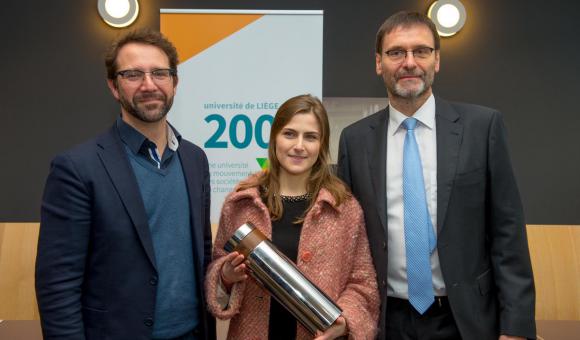
In 1817, Belgium was at a historical turning point. Indeed, William I created three universities: the first one in Gand, the second in Louvain and the third in Liège. The latter began its bicentennial celebrations on March 9th. The first event was the burial of a time capsule called “Democracy 2030”, realized by students in political science and geography.
On March 9th, 200 days before the birth date of the University of Liège (ULg), a time capsule was buried in the middle of the Sart Tilman site by Albert Corhay, the University Rector, Professor Sébastien Brunet and Juliette Renard, a Master student in political science. It contains three potential scenarios about the future of democracy in 2030: a positive one, a negative one and a neutral one. It’s a way of comparing the visions of the students who created the capsule and of those who will discover it in 13 years.
Albert Corhay explains: “It’s a symbolic moment that shows that we’re facing the future”.
The ULg contemplates the start of the academic year 2017 with enthusiasm, as on September 25th it will be the birthday of the University. In September, there will be another major event in the train station Liège-Guillemins: the exhibition “I will be 20 in 2030”, in reference to a past exhibition called “I was 20 in 1945”. This exhibition will run from 23rd September until the end of 2018 and it will try and show what the future may look like.
During this bicentennial year, the University will organize a whole range of activities, including concerts, conferences, sporting events, etc. The programme is available on the University website. The universities of Liège and Gand will meet several times, including on May 16th in the Bozar Center for Fine Arts in Brussels, for the “Uni Decenti” concert in the presence of King Philippe.